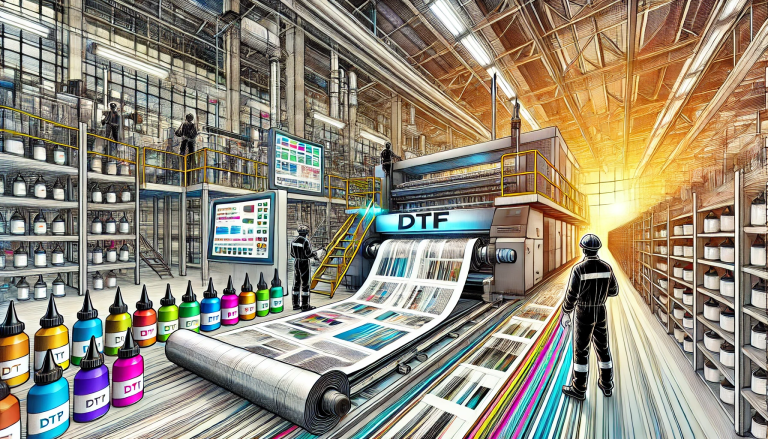“The Art and Science of DTF Gang Sheet Transfers: A Comprehensive Analysis” -MAXDTF- A3 DTF Supplier, DTF printing material Manufacturer, Made in China
Introduction
Technological innovation has always been a driver of change and progress, and the textile printing industry is no exception. Direct-to-Film (DTF) transfers have emerged as a powerful tool, and a subset of this technology – DTF gang sheet transfers – is worth exploring in greater detail. This versatile and efficient process allows for multiple designs to be printed simultaneously onto a single transfer sheet. This essay aims to provide a comprehensive understanding of DTF gang sheet transfers, including their advantages, application process, potential challenges, comparison to traditional methods, and prospects.
Part 1: Understanding DTF Gang Sheet Transfers
DTF gang sheet transfers are a significant advancement in the textile printing industry. The process involves printing multiple designs onto a single DTF transfer sheet, resulting in efficient use of space and materials, thereby increasing productivity and reducing costs. DTF gang sheets enable flexibility in printing, allowing multiple designs or variations of a single design to be printed together. This method offers a creative and economical solution for businesses or individuals interested in producing various designs at once.
Part 2: Application Process of DTF Gang Sheet Transfers
The process of applying DTF gang sheet transfers is somewhat similar to the standard DTF transfer process, with some extra steps. The first stage involves creating or choosing the desired digital designs, which can be done using software like Adobe Illustrator, Photoshop, or Canva. Once the designs are ready, they are arranged on a single page in the software, maximizing the available space without overlapping.
The designs are then printed onto the DTF transfer sheet using a DTF printer. The printer, loaded with CMYK and white pigment ink, imprints the multiple designs onto the transfer sheet. The printed sheet is then coated with an adhesive powder, which is then activated by applying heat.
Once the sheet is prepared, it can be transferred onto the textile. The gang sheet is placed onto the fabric and heat and pressure are applied using a heat press or iron. After sufficient heat application and a cooling period, the sheet is peeled off, leaving the printed designs on the fabric.
Part 3: Advantages of DTF Gang Sheet Transfers
DTF gang sheet transfers provide numerous advantages, the foremost being efficiency. The process allows multiple designs to be printed simultaneously, leading to time-saving and reduced material usage. This can be especially beneficial for businesses handling various custom orders at once.
Additionally, DTF transfers deliver superior color vibrancy and detail precision compared to traditional methods like screen printing or heat transfer vinyl (HTV). It enables the printing of intricate designs and photographs, which was a significant challenge with older methods.
Moreover, DTF transfers are versatile, working effectively with different types of fabrics, including cotton, polyester, and blends, extending their usability in diverse textile design scenarios.
Part 4: Potential Challenges with DTF Gang Sheet Transfers
While DTF gang sheet transfers offer significant benefits, it’s also important to consider potential challenges. The initial cost can be a barrier for some, considering the need for specialized equipment like the DTF printer and heat press.
Also, while arranging multiple designs on a single sheet, it’s crucial to ensure accurate alignment and spacing to prevent overlap during the transfer process. If not done correctly, this could lead to wastage of materials and subpar results.
Furthermore, while DTF transfers provide excellent design quality and versatility, they may not match the durability of traditional methods like embroidery, especially under rigorous washing or usage conditions.



